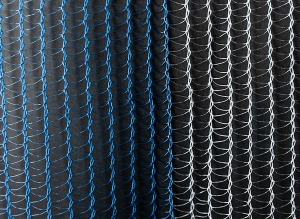Ishade nets are becoming increasingly common in agricultural and outdoor settings, offering practical solutions for managing sunlight, temperature, and wind exposure. Designed from durable synthetic fibers, these nets are used across farms, nurseries, and recreational areas to protect crops, plants, and outdoor spaces. Their ability to balance light diffusion and ventilation has led to steady demand among farmers, landscapers, and facility managers.
One of the primary benefits of Ishade nets lies in their role in crop protection. By providing controlled shading, the nets help reduce direct sunlight exposure, which can minimize stress on plants during hot weather. This feature is particularly valuable for delicate crops such as vegetables, flowers, and fruit-bearing plants that require moderate light for growth. The nets also help maintain soil moisture levels by reducing water evaporation, contributing to more consistent growing conditions.

In addition to shading, Ishade nets serve as a barrier against wind and debris. Their woven structure reduces the impact of strong winds on crops and prevents damage caused by blowing sand or leaves. This protective quality is beneficial in both open fields and greenhouse environments, where stable conditions are essential for maintaining plant health and productivity.
Ishade nets are not limited to agricultural use. They are widely employed in outdoor recreational spaces, such as parks, playgrounds, and sports facilities, where they provide shade for visitors and reduce heat buildup on surfaces. Event organizers also use these nets to create shaded areas for temporary gatherings, offering a comfortable environment without the need for permanent structures.
Durability is another factor contributing to the popularity of Ishade nets. Manufactured from high-density polyethylene or similar materials, the nets are designed to withstand prolonged exposure to sunlight and varying weather conditions. Many variants include UV-stabilized fibers, which help maintain structural integrity and color over extended periods, even in challenging outdoor environments.
The adaptability of Ishade nets further enhances their appeal. They are available in various shading percentages, allowing users to select the appropriate level of light filtration for specific crops or outdoor needs. Customizable sizes and colors also enable integration into different settings, from large-scale farms to small backyard gardens. This flexibility supports a wide range of applications without requiring significant structural changes.
Installation and maintenance of Ishade nets are relatively straightforward. The nets can be secured with ropes, clips, or tensioning systems, and they are lightweight enough to be repositioned as needed. Cleaning typically involves simple rinsing to remove dust or debris, while periodic inspections ensure that the material remains intact and functional.
The rising interest in sustainable farming practices and energy-efficient outdoor solutions has contributed to the continued demand for shading products like Ishade nets. By reducing the need for additional cooling measures and supporting healthier crop growth, these nets align with broader efforts to conserve resources and promote environmentally conscious practices in agriculture and landscaping.
Manufacturers are responding to evolving market needs by introducing Ishade nets with enhanced features, such as improved tensile strength, finer mesh designs for pest control, and options that integrate with greenhouse frameworks. These innovations aim to provide more versatile and long-lasting solutions for both commercial and residential users.
In conclusion, Ishade nets have established themselves as reliable tools for managing light and environmental conditions across agricultural and outdoor applications. Their combination of shading, wind protection, and durability supports a variety of uses, from crop cultivation to recreational spaces.



 英语
英语 西班牙语
西班牙语










